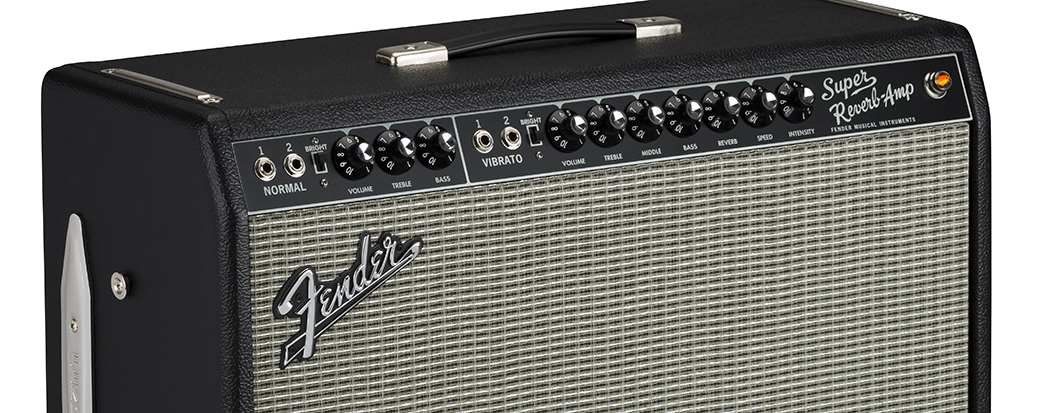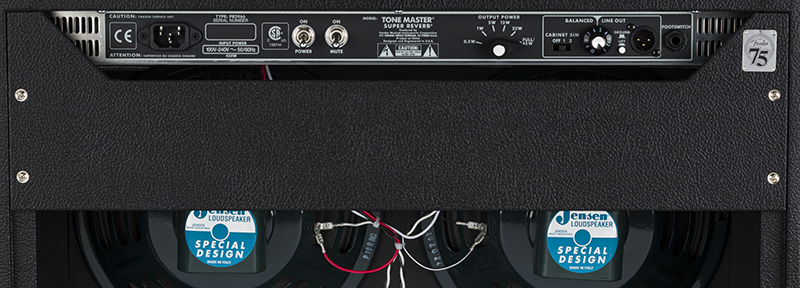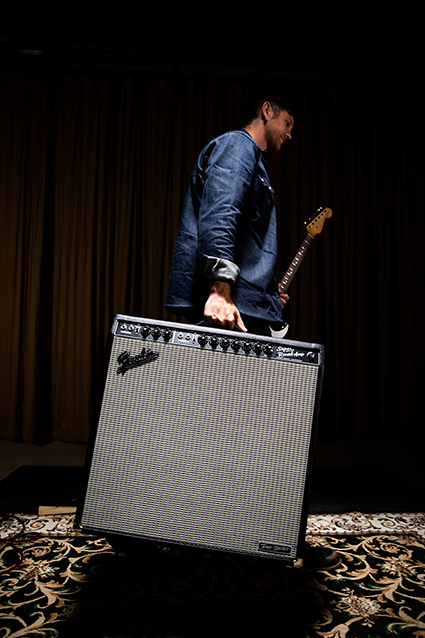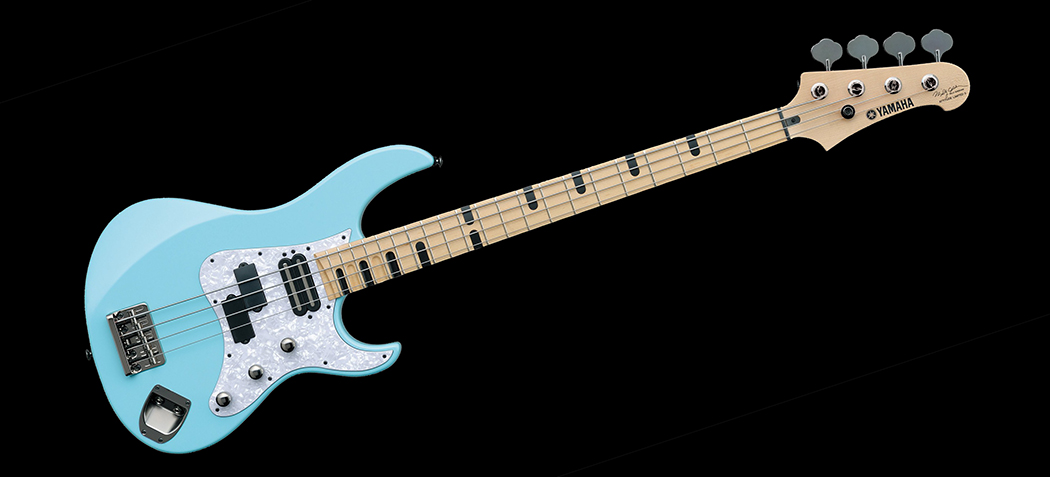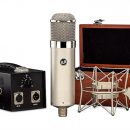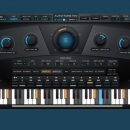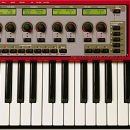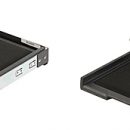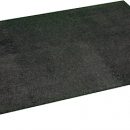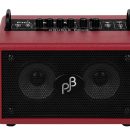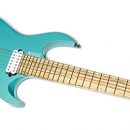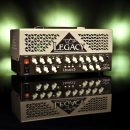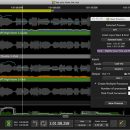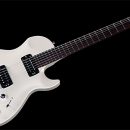 The Fender Super Reverb Amp is one of the most iconic amps in history, and it remains sought after to this day. Originally made from 1963 until 1982, it was known for classic Fender clean tones and punchy sound at the edge of breakup, along with its fantastic reverb and tremolo. There is a caveat however: it's big and it's heavy, and not very practical for anything other than a large stage or studio. The Tone Master version of this amp changes the game if you were ever considering a Super Reverb, though. Making it half the weight and featuring a built-in power attenuator, plus the ability to recording direct, suddenly you have a classic amp that is usable across a much wider range of situations. And, it won’t break your back.
The Fender Super Reverb Amp is one of the most iconic amps in history, and it remains sought after to this day. Originally made from 1963 until 1982, it was known for classic Fender clean tones and punchy sound at the edge of breakup, along with its fantastic reverb and tremolo. There is a caveat however: it's big and it's heavy, and not very practical for anything other than a large stage or studio. The Tone Master version of this amp changes the game if you were ever considering a Super Reverb, though. Making it half the weight and featuring a built-in power attenuator, plus the ability to recording direct, suddenly you have a classic amp that is usable across a much wider range of situations. And, it won’t break your back.
As we stated in our review of the Fender Tone Master Deluxe Reverb, what would make someone interested in a digital, solid-state version of a Fender Super Reverb when you can get modeling amps that have a greater number of amp choices, often at much lower prices? Obviously it’s because you’re focused on classic Fender tone in a familiar style. But maybe you want the hand-wired, tube version? Or maybe you have the vintage amp in your studio and you simply want to take that sound to the live stage without the hassles of tube amp maintenance… and, oh yeah… the weight?
The modeling amp world typically tries to cram as many different amp models in as small and economical of a configuration as they can, but purists prefer simple and direct products with less complexity. Fender surprised the music world a few years ago with a different approach. They proposed, how about we make digital versions of our beloved amps that recreate the sound, but with added features and at half the weight to make them easier to lug around? That’s where the Tone Master line comes in, and Fender succeeds admirably in moving their vintage tone to a modern platform.
Now if you demand a loud, all-tube amp and don’t mind the weight (around 70 pounds for this baby), then you may not be very interested in the Tone Master line. But if you're looking for a much lighter version of the Super Reverb without the drawbacks of its beastly tube counterpart, there is plenty to like here.
With a built in power attenuator and line out, the Tone Master version of the Super Reverb is an enticing addition that may change the way you think about solid state amps and open your mind to the option of an amp this size.
Features
The Tone Master Super Reverb amp uses an impressive 200 Watts of digital processing power to achieve faithful modeling of the 45-watt Deluxe tube amp. Key features include a resonant, lightweight, open back, plywood cabinet, four Jensen P-10R alnico ten-inch speakers, rear-panel output selector for full power and five attenuated settings, balanced XLR line output with two built-in impulse response cabinet simulations (for recording direct or going direct to a PA). All of this translates into an amp that is half the weight of an all-tube Super Reverb.
The lightweight meranti plywood cabinet is covered in a black textured vinyl with a silver grille cloth and black front panel. The jewel light is red for power on, red/amber for warming up, and amber when in standby. The amp handle on the top is molded plastic with nickel-plated caps. Unlike most modeling amps that use flat response speakers to use a wide range of emulated amps, the Tone Master Super Reverb is equipped with four Jensen P-10R alnico ten-inch speakers.
The amp has two channels and two high/low inputs for each channel. The Normal channel is straightforward with a volume control and treble and bass controls that go from 1-10. The Vibrato channel has separate volume, treble, and bass controls with added reverb control and vibrato speed and intensity controls.
The back of the amp includes the IEC power jack, an on/off switch, a mute switch (which can mute the speaker when you are going direct), output attenuator section, and a balanced XLR line out section with cabinet simulation, volume, and grounding switch. And finally, there is the footswitch input.
The first IR cabinet simulation is based on the Jensen speaker mic’d with a standard Shure SM57 microphone and the second IR response utilizes a Royer Labs R-121 Studio ribbon microphone. These are switchable via a small switch, and there is also the option to not use any IR cabinet simulation.
The six-way “attenuator” located on the back panel of the amp provides the flexibility of running at full 45 watt “perceived” power or going down all the way to 0.5 Watts. In between, there are 22 Watts, 12 Watt, 5 Watt and 1 Watt options. Since 5 Watts is roughly half as loud at 45 Watts the amp doesn't really become “bedroom level” quiet unless you're at 0.5 Watts (1 Watt is still very loud for bedroom/apartment use if you’re at max volume).
The amp weighs is a rather modest 36 lbs (16.33 kg). The amp height is 24.75” (62.9cm) with a depth of 10.5 “ (26.7cm) and width of 25.125” (63.8 cm) and comes with a cover and two-button footswitch for vibrato and reverb. Power for the amp allows for universal worldwide 100V-240V operation. It also comes with two familiar side legs to angle the amp up. Surprising for an amp that offers silent recording and attenuated volume output, there is no headphone jack for silent practice. But with direct out to the audio interface on your computer, you can play silently through your computer in that manner if desired.
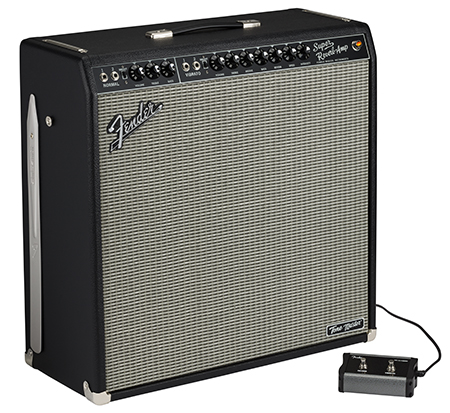
Usability
First and foremost, just like the other amps in this series, it looks and feels like an amp and not some weird space odyssey. Other than the Tone Master logo on the bottom of the front grille, it’s indistinguishable from the tube version from the front of the amp. There are no special buttons or digital screens to sort through on the front or top of the amp.
First, we chose the overall sound we wanted from the amp and then choose our desired attenuation. Although this amp is digital, attenuation changes the sound and response of the amp just as you would experience with a tube amp. The two inputs on each channel gave slightly different gain options.
For the direct output via an XLR mic cable, we liked that we could mute the speaker, which was great both for recording as well as playing live gigs where we relied on in-ear monitoring and wanted minimal stage volume.
Functionally, using this amp is no different than dialing in any other Fender Super Reverb amp, which is to say, it’s as straightforward as other classic Fender designs.
Sound
We wasted no time in playing it at band practice. The amp arrived on a Saturday and we were ready to test it out on Sunday. We were in a decent sized practice room at a local rehearsal studio and let's just say, this thing is loud! Without an overdrive pedal of some sort at lower volume, playing this amp at max volume will drown out most of the band, even at most of the attenuated volumes. But that's not where the magic of the Super Reverb sits. The magic happens at the edge of breakup around 6 or 7 on volume control. With the attenuator we could find that sweet spot, then drop the volume without affecting the tone. The treble, middle and bass are all usable throughout their sweeps with a very linear increase or decrease. The bass, however, is very strong and sounds best to our ears at around number 3 on the knob. Increasing the middle tone control increased the gain and punchiness, and the Tonemaster responded well to volume changes on the guitar, as well as our playing dynamics. Although known for its tight bass and glassy highs with somewhat scooped midrange, the EQ made the tonal range very broad.
As Fender states, it’s “virtually indistinguishable” from its tube brethren and although we could not do a side-by-side comparison as we did with the Deluxe Reverb models, we would agree with that remark, particularly when playing in the context of a full band. There were some small sonic differences from other Fender Tube amps we have in terms of the glassiness and sag, but it was hard to say how much of that had to do with speaker differences or the amp circuitry. Regardless, it was damn close, with (importantly) touch and response that were very similar, and the amp responded well to changes in our volume and the tone controls on the guitar—which is certainly not always the case with modeling amps. We do have to admit there is something slightly more organic sounding/feeling when playing through a real tube amp, but we quickly forget about that within a few minutes of letting loose on this thing, especially when playing with others (as opposed to by ourselves in a quiet studio).
It was clear we had a lot of clean headroom to play with that made this a great amp for the pedal lovers among you. We have no lack of options when it comes to guitars in our studio equipped with single coils, P90s, humbuckers, filtertrons, and lipstick pickups. Our beloved Fender Jazzmaster sounded phenomenal with this amp! We ran many of our other guitars through this amp and obtained consistently great, classic Fender sound, both out loud and directly into our DAW.
There were no surprises with the Strats and Teles in our collection, but we were surprisingly blown away by our humbucker-loaded guitars through this amp. With the Tonemaster Super Reverb on cleaner settings, we tested a number of overdrive pedals to hear how various gain pedals interacted with the amp. A Tube Screamer was well matched to this amp in particular, delivering a nice mid-range overdrive. As with the Deluxe Reverb, our Friedman BE-OD sounded really good for obtaining high-gain tones with nice “chunky but clean” distortion that didn't fuzz out. But that said, the Super Reverb was a perfect companion to our vintage-style fuzz pedals.
Then of course we ran our phaser, univibe, delay, wah and all of them performed as expected with no muddiness. Using the Electro-Harmionix B9 we got some outstanding organ tones. The verdict is clear: This amp takes pedals great!
The reverb sounded best with the dial near 3 although it was usable to higher levels, unlike some amps where reverb becomes completely muddy or unusable. The vibrato was equally satisfying. As Kenny Greenberg describes in his demo videos, it sounds best “not too slow and not too fast.” With the intensity control it was easy to make sure it didn't get lost in the mix during our band practice. Both reverb and vibrato can be turned off (on the vibrato channel) via the included footswitch. But if you don't need reverb or vibrato, you can plug into the stripped down Channel 1. Regardless of which side of the amp you plug into, the overall tone from each channel is the same.
Surprisingly, this amp also works well for bass, without the tube rattle you get when you try to use a guitar amp for bass. It probably wouldn’t be your main choice for a bass amp, but if you play guitar and bass, this could easily serve double duties for you.
Have you been relying on models of the Fender Super Reverb in your DAW for recording? Our final test set out to determine if this amp would serve us better for tracking in the digital domain. And here again, we were pleasantly surprised. In this amp’s case, it sounded almost just like the amp. With cabinet simulation set Off, you get the brightest tone—and sometimes a fuzzy tone—depending on the tone settings and guitar. The SM57-emulated output gives a warmer sound, while the Royer Labs is the darkest. Tweaking the treble and bass we were able to get a great amp sound directly into our DAW, which really adds to the versatility of this amp. You're almost certainly going to want to use one of the IR cabinet responses, but if you have your own IRs, you can obtain even better sounding Fender tones by pairing those with the non-simulation output.
Of note, the attenuator works only for the external Jensen speakers and not when recording direct. As a result, you can’t use it to lower the master output and then overdrive the gain stages to vary your tone as you can with various tube amps. The attenuator is strictly for amp volume reduction—not recording tone alteration. That being said, at 0.5W the tone was very squished. But that’s what you get to play at bedroom levels with this amp.
Fender has a variety of tasty demos so you can hear for yourself how authentic this digital Fender amp sounds. Check out Rick Hines from Fender and a host of artists run through the Tone Master Super Reverb both with clean settings and with various pedals:
Also, Fender produced a fantastic series called “Plugged In” with Kenny Greenberg. Episode 1 is about dialing in your amp with the Tone Master Blonde amps, which can easily be applied to your use of the Super Reverb. Episode 2 is about recording with these amps, and episode 3 is about finishing your track. Head on over to YouTube to see these great videos.
Episode 1: https://youtu.be/JpQfciWuVVk
Episode 2: https://youtu.be/kTvrBN8Cdno
Episode 3: https://youtu.be/Y-ZbhVIwr64
Documentation and Product Support
The Tone Master Super Reverb comes with a basic two-page manual, but that’s all you need for this amp. The Fender website provides information on how to install firmware updates should the amp have any bugs or receive future enhancement.
The amp includes a standard Fender 2-year limited warranty.
Price
The Fender Tone Master Super Reverb Amp costs $1,199. Given the quality of the tones from the front of the amp, a built-in attenuator, and options to record direct (or go direct to a mixing board with no stage noise), we think that’s a fair price. An all-tube ‘65 Super Reverb will run you $1,899 and does not have an attenuator nor direct out option—and you will likely end up needing physical therapy after carrying that monster to a few gigs.
Contact Information
Fender
www.fender.com

